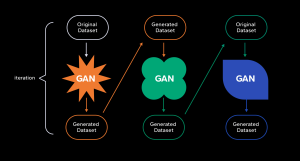In an era dominated by digital technology, the security of personal and organizational data has never been more critical. Data breaches have emerged as one of the most significant threats to privacy and security, affecting millions of individuals and organizations each year. This article explores the nature of data breaches, their causes, potential impacts, and effective strategies for prevention and response.
What is a Data Breach?
A data breach is an incident where unauthorized individuals gain access to sensitive, protected, or confidential data. This data can include personal information, financial records, healthcare data, intellectual property, and more. Breaches can occur in various forms, including theft, hacking, accidental disclosure, or loss of physical devices containing sensitive information.
Data breaches can affect any entity, including corporations, government agencies, educational institutions, and individual consumers. The consequences can be severe, often leading to significant financial losses, reputational damage, and legal ramifications.
5 Causes of Data Breaches
Data breaches can occur due to a variety of factors, including:
1. Hacking
Cybercriminals often employ sophisticated techniques to breach security systems. Common hacking methods include phishing, malware, ransomware, and exploiting software vulnerabilities. Hacking remains one of the leading causes of data breaches, with attackers continuously evolving their tactics.
2. 2. Insider Threats
Not all data breaches are caused by external actors. Insider threats can arise from employees, contractors, or business partners who intentionally or unintentionally expose sensitive data. This can occur through malicious intent, negligence, or lack of awareness regarding security protocols.
3. 3. Physical Theft
The loss or theft of physical devices—such as laptops, smartphones, or external hard drives—can lead to significant data breaches. If these devices are not adequately secured or encrypted, unauthorized individuals may easily access sensitive information.
4. 4. Accidental Disclosure
Data breaches can also occur through human error, such as mistakenly sending sensitive information to the wrong recipient, misconfiguring security settings, or failing to secure databases. These mistakes can have serious consequences if sensitive data is inadvertently exposed.
5. 5. Third-Party Vulnerabilities
Organizations often rely on third-party vendors for various services, which can create vulnerabilities. If a third-party vendor suffers a data breach, the affected organization may also be at risk, particularly if sensitive data is shared with that vendor.
The Impact of Data Breaches
The consequences of a data breach can be profound, affecting individuals, organizations, and even society at large:
- Organizations can face significant financial repercussions following a data breach. Costs may include legal fees, regulatory fines, incident response expenses, and the cost of restoring systems. Additionally, organizations may experience a decline in revenue due to lost customers or business opportunities.
- A data breach can severely damage an organization’s reputation. Customers may lose trust in a company’s ability to protect their personal information, leading to a loss of business. The negative publicity surrounding a breach can have long-lasting effects on customer loyalty and brand image.
- Data breaches can result in legal consequences for organizations. Depending on the nature of the breach and the jurisdiction, organizations may face lawsuits from affected individuals, regulatory scrutiny, and fines for non-compliance with data protection regulations.
- For individuals, data breaches can lead to identity theft, where personal information is used to commit fraud. This can result in financial loss, damage to credit ratings, and long-term implications for victims.
- Recovering from a data breach can be a time-consuming and disruptive process for organizations. The need to investigate the breach, secure systems, and restore services can divert resources and impact business operations.
What to Do in the Event of a Data Breach
If a data breach occurs, it is essential to act quickly and effectively:
- Immediately isolate affected systems to prevent further unauthorized access.
- Determine the extent of the breach and what data has been compromised.
- Depending on legal requirements, inform affected individuals and stakeholders about the breach.
- Consider hiring cybersecurity professionals to investigate the breach, assess vulnerabilities, and assist with recovery efforts.
- After addressing the breach, review security protocols and update policies to prevent future incidents.
Conclusion
Data breaches represent a significant threat to personal privacy and organizational security in the digital age. Understanding the causes, potential impacts, and prevention strategies is essential for mitigating risks and safeguarding sensitive information. By adopting a proactive approach to data security and fostering a culture of awareness, individuals and organizations can better protect themselves against the pervasive threat of data breaches. In a world where data is increasingly valuable, investing in cybersecurity is not just a choice—it’s a necessity.Bottom of Form








+ There are no comments
Add yours